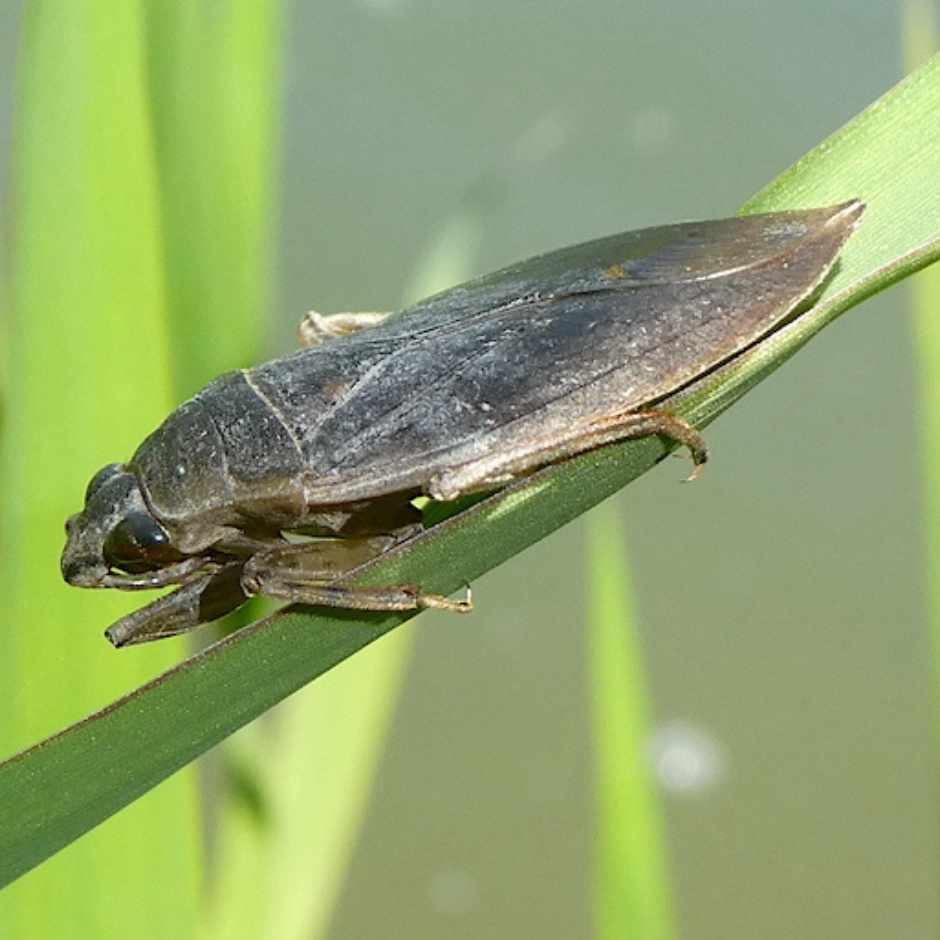The recent stretch of much warmer days kicked insect activity into high gear. More species are appearing and since us humans are out and about with more regularity, we’re noticing more of the critters we share Montana with. Here’s some of the latest species being found in western MT
Submit your bug pictures to bugid@missoulabutterflyhouse.org (and remember to include your name, the date, and the location where you took the photo)!
Header photo: Old World or Anise Swallowtail? If you saw our social media post yesterday, you know to look at the orange, black and yellow spots on the hindwing. Since the black spot touches the edge of the orange, this is an Old World Swallowtail (Papilio machaon). Glenn Marangelo, May 24, 2025, Charlo, MT (CSKT Bison Range)

Thatching Ant
Formica sp.
This genus of ants has been described as “predatory with a sweet tooth.” Workers hunt or scavenge all manner of arthropods and less often earthworms. They satisfy their sugar cravings with honeydew (aphids’ sugary waste product) and extrafloral nectar (nectar-secreting glands located outside of flowers), often foraging high in trees. Best not to mess with the nest, as workers will swarm, thrusting their abdomens forward to spray the intruder with a dose of formic acid. Why construct and maintain such a large nest? The mound’s exposure to sunlight and the thatch insulation provide climate control (both temperature and humidity). Workers constantly repair the thatch to keep it in tip-top shape and gnaw the plants surrounding it to minimize shade.
AJennifer Wells, May 24, 2025, Missoula, MT

Uhler’s Arctic
Oeneis uhleri
With only 1.5 to 2.5 inch wingspan, these small butterflies are often overlooked. They can be found from Alaska to New Mexico through the Rocky Mountains and prairies. The females lay their eggs singly on grasses and sedges. The fourth instar of the caterpillar will hibernate, emerge in the spring to feed before pupating just under the soil.
Connie Geiger, May 24 2025. Helena, MT

Wild Cherry Sphinx Moth
Sphinx drupiferarum
Wild Cherry Sphinx Moths are on the wing from mid-May to early August and are usually uncommon to rare. They can be distinguished from other sphinx moths in our area by the contrasting whitish gray and dark brown forewing. The larvae, as you may have guessed, mostly feed on leaves of cherries (Prunus spp.), as well as apples, peaches, and plums. Adults sip nectar from deep-throated flowers. This species is widely distributed across North America and found from coast to coast, except in the deep south and the extreme Southwest (northern limit extends from the mouth of the St. Lawrence Seaway to southern British Columbia).
Becky Crawford and students at the Missoula Community School, May 27, 2025, Missoula, MT

Snakefly
Agulla sp.
These beautiful and seemingly elusive insects get their name from the long “neck” of the adults (part of their thorax). Snakeflies in this genus can be found in SW Canada and the western US. They are relatives of lacewings and are very impressive predators in both the larval and adult stages.
Klara Briknarova, May 26,2025, Missoula, MT

Dimorphic Sitochroa
Sitochroa chortalis
This tiny moth, less than 7/8 of an inch, is found throughout much of North America. Its habitat consists of grassland and prairie areas. Adults are found from mid-May to mid-July. The larvae feed on Amaranthus retroflexus, commonly known as the Redroot Amaranth.
Klara Briknarova, May 27,2025, Missoula, MT

Giant Birch Sawfly
Trichiosoma triangulum
Despite the name, sawflies are not flies and reside in the order Hymenoptera, making them relatives of bees, ants, and wasps. Females don’t pack a sting, but most species have a sawlike ovipositor to cut into plant tissue before laying an egg. There are four North American species in the genus Trichiosoma, also known as the “Hairy-clubhorn sawflies” for their hairy bodies and the apical clubs on their antennae. Because of their immense size and fuzzy bodies, they are often mistaken for bumblebees.
Glenn Marangelo, May 24, 2025, Charlo, MT (CSKT Bison Range)

Black Damsel Bug
Nabis subcoleoptratus
Damsel bugs are predatory true bugs, similar to the considerably more formidable-sounding assassin bugs. However, they are more slender and “delicate” looking, perhaps lending to their name. Adults overwinter in leaf litter, and their short lifespan means some warmer climates may see up to five generations per year. There are 400 species of Damsel Bugs (family Nabidae) found worldwide and 40 species found across North America, including Alaska and Hawaii.
Glenn Marangelo, May 24, 2025, Charlo, MT (CSKT Bison Range)

Western Arctic Skipper
Carterocephalus skada
Like most skippers, the adult butterflies rest with their wings closed, but you can often find them basking in the sun with their wings open to warm up when the temperature is cooler. They can be found in western Montana from early May through June and frequent openings in heavily forested woods, moist meadows, and streamsides where the caterpillars feed on grasses.
Glenn Marangelo, May 24, 2025, Charlo, MT (CSKT Bison Range)

Casey’s Lady Beetle
Hippodamia caseyi
Like other lady beetles in this genus, Casey’s feed on aphids throughout their range from northern California to Colorado to British Columbia. Both the adults and larva are active from early spring to fall with the adults hibernating, often in large groups, through the winter months.
Glenn Marangelo, May 24, 2025, Charlo, MT (CSKT Bison Range)

Giant Water Bug
Belostoma flumineum
These aquatic true bugs are commonly called “toe-biters” because of the painful poke they can deliver. In MT, most people are familiar with their much larger relative, Lethocerus americanus, at nearly 2.5 inches in length. Based on the small size (just under an inch) and shape of this individual, we believe this species is Belestoma flumineum. Females lay their eggs on the backs of the males. It is then up to dad to take care of the eggs until they hatch, carefully making sure the eggs get enough oxygen and protecting them from predators
Glenn Marangelo, May 24, 2025, Charlo, MT (CSKT Bison Range)